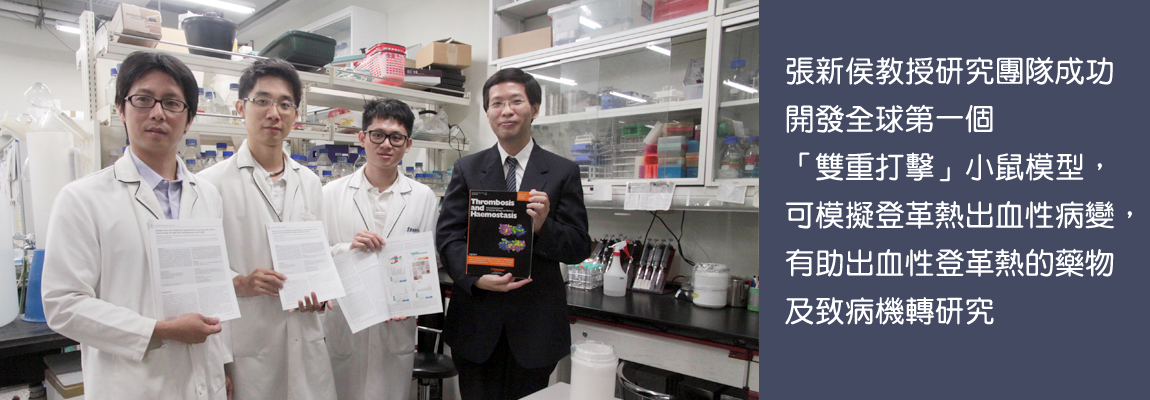As the dengue epidemic continues to spread in Taiwan, with hundreds of people died of severe dengue infections, the research team of Tzu Chi University has achieved a major progress on the establishment of a two-hit model of the dengue hemorrhage fever (DHF).
Primary dengue virus infection can induce mild symptoms, which is known as dengue fever, a self limited disease. However, instead of inducing protective immunity, secondary infections of dengue virus may induce life threatening DHF. Therefore, abnormal immune responses were though as part of the pathophysiology of DHF. Probably because of the pathogenic mechanism of DHF remains unclear, no specific treatments and effective vaccines are currently available.
An integrated group of three research teams of Professor Hsin-Hou Chang and Der-Shan Sun at Department of Molecular Biology and Human Genetics, Tzu-Chi University, and Professor Wen-Sheng Wu at Department of Laboratory Medicine and Biotechnology, College of Medicine, Tzu Chi University, has proposed a two-hit hypothesis for dengue hemorrhage fever: viremia of dengue virus is the first hit, and dengue-elicited autoantibody is the second hit. When damages that induced by both hits over the pathological thresholds, the hemorrhage pathogenesis is elicited. Using this hypothesis, the research group of Tzu-Chi University has successfully demonstrated that concurrent dengue virus and autoantibodies treatments are able to elicit hemorrhage pathogenesis in a mouse model. The relevant studies have been published in the international journals “Thrombosis and Haemostasis” and “Journal of Immunology” 1,2, and the 10th Asia-Pacific Medical International conference 3.
Professor Chang has suggested that if the two-hit model is indeed involved in the hemorrhage pathogenesis, screening of autoantibody titers or other pathogenic factors may be applied prior to the elicitation of hemorrhage pathogenesis. With such surveillance, DHF might be treated at an early stage. In addition, as the dengue nonstructural protein NS1 can elicit autoantibody in the host, how to prevent the elicitation of autoantibody is one of the major challenges to develop a safe and effective dengue vaccine.
References:
- Lien TS, Sun DS, Chang CM, Wu CY, Dai MS, Chan H, Wu WS, Su SH, Lin YY, Chang HH. Dengue virus and antiplatelet autoantibodies synergistically induce haemorrhage through Nlrp3-inflammasome and FcγRIII.Thrombosis and Haemostasis 113, 1060-70 (2015).
- Sun DS, Chang YC, Lien TS, King CC, Shih YL, Huang HS, Wang TY, Li CR, Lee CC, Hsu PN, Chang HH. Endothelial Cell Sensitization by Death Receptor Fractions of an Anti-Dengue Nonstructural Protein 1 Antibody Induced Plasma Leakage, Coagulopathy, and Mortality in Mice. Journal of Immunology 195, 2743-53 (2015).
- Chang HH. Dengue Virus and Antiplatelet Autoantibodies Synergistically Induce Hemorrhage in the Two-hit Mouse Model. 10th Asia-Pacific Congress of Medical Virology (APCMV), OS 4-4, Oct/17 (2015).
Figure. The two-hit hypothetical model; adopted from reference 2.


